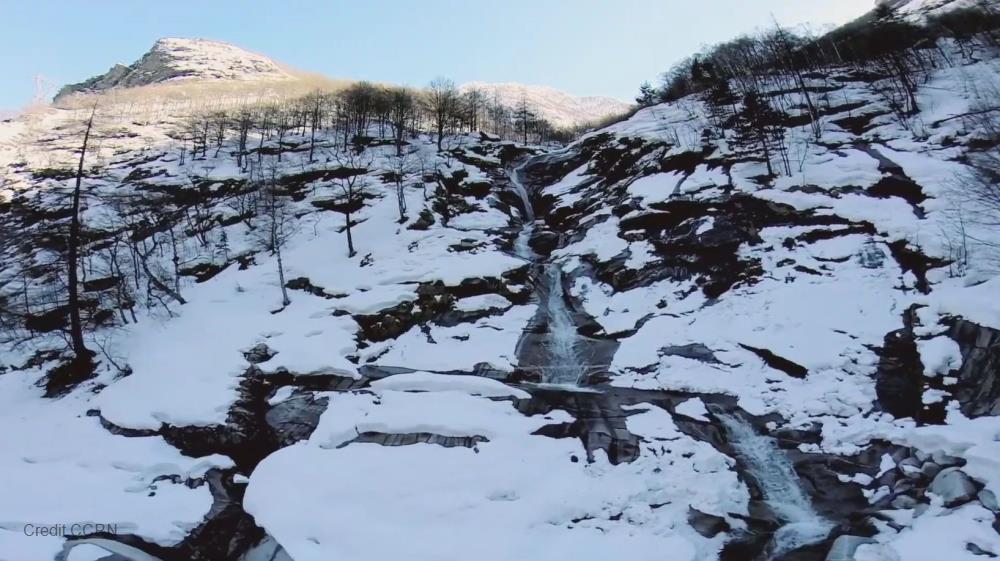
Related items loading ...
Section 1: Overview
Name of Research Project
|
Related Project
|
Part
|
|
CORE: Core Modelling and Forcasting
|
|
|
|
|
|
|
|
Program Affiliations
Related Research Project(s)
Dataset Title
Pseudo Global Warming Scenario (pgw-wrf-wca): Weather Research and Forecast (WRF) model simulations over Western Canada from 2000-2015
Additional Information
Creators and Contributors
|
Yanping Li | PI | yanping.li@usask.ca | University of Saskatchewan |
Zhenhua Li | Originator | zhenhua.li@usask.ca | University of Saskatchewan |
Abstract
The Weather Research and Forecasting model Version 3.6.1 ( the model source code is accessible from
http://www2.mmm.ucar.edu/wrf/users/downloads.html) was used to simulate the historical (2000-2015) and projected climate (RCP8.5) over western Canada with a convection-permitting resolution of 4 km. The WRF model is fully compressible and nonhydrostatic and uses the Advanced Research WRF (ARW) dynamical solvers. The model domain is composed of 699 x 639 grid points with 4-km horizontal resolution to cover western Canada. The atmospheric simulation consists of hourly pseudo global warming climate scenario (RCP8.5, end of 21st century, pgw-wrf-wca) from 2000-10-01 to 2015-09-30 at 4km spatial resolution. The model simulations employed several parameterization schemes, including Thompson microphysics scheme (Thompson et al., 2008), the Yonsei University (YSU) planetary boundary layer scheme, the Noah land surface model (Chen and Dudhia, 2001), and the CAM3 radiative transfer scheme (Collins et al., 2004). The deep cumulus parameterization was turned off because with a 4-km horizontal resolution the model can explicitly resolve deep convection and simulate convective storms. The convection-permitting model produces precipitation more realistically by directly resolving convections. Subgrid cloud cover was also disabled. The pseudo global warming simulation (PGW), a RCP8.5 climate change forcing scenario for the period of 2071-2100, aimed to reproduce the future climate statistics in terms of variability and mean state by the end of 21st century (2071-2100). The PGW simulation was forced using 6-hourly 0.7 degree ERA-Interim reanalysis data (Dee et al., 2011) with the RCP 8.5 climate change forcing by 2071-2100 from a 19-member CMIP5 ensemble added.
The following atmospheric variables are currently available for western Canada: grid scale precipitation, temperature, latent heat flux, upward heat flux, upward moisture flux, downward long wave flux, downward short wave flux, surface pressure, mixing ratio, U component of the 10-m wind ( along grid x axis) and V-component of the 10-m wind ( along grid Y axis). These data are in NetCDF format and can be downloaded via the Cuizinart Platform (
http://cuizinart.io).
Purpose
The Weather Research Forecasting model can simulate weather systems with spatial scales ranging from a few metres to thousands of kilo-metres and is suitable for both operational forecasting and atmospheric research. To assess the hydroclimatic risks posed by climate change in western Canada, a retrospective simulation (CTL) and a pseudo-global warming (PGW) dynamical downscaling of future warming projection under RCP8.5 from an ensemble of CMIP5 climate model projections using a convection-permitting 4-km WRF model. The convection-permitting resolution of the model avoids the error-prone convection parameterization by explicitly resolving cumulus plumes. The PGW-WRF-WCA dataset contains the pseudo global warming simulation of the period 2000-2015 with climate change scenario of RCP8.5 corresponding to 2071-2100. This data set will be used support atmospheric research objectives within the Global Water Futures Program funded by Canada First Research Excellence Fund.
Plain Language Summary
Keywords
|
Meteorology |
Western Canada |
Citations
Li, Z., & Li, Y. (2019). Pseudo Global Warming Scenario (pgw-wrf-wca): Weather Research and Forecast (WRF) model simulations over Western Canada from 2000-2015. Waterloo, Canada: Canadian Cryospheric Information Network (CCIN). (doi.org/10.5194/hess-2019-201).
Section 3: Status and Provenance
Dataset Version
Dataset Creation Date
Status of data collection/production
Dataset Completion or Abandonment Date
Data Update Frequency
Creation Software
Primary Source of Data
Other Source of Data (if applicable)
Data Lineage (if applicable). Please include versions (e.g., input and forcing data, models, and coupling modules; instrument measurements; surveys; sample collections; etc.)
Section 4: Access and Downloads
Access to the Dataset
Terms of Use
Does the data have access restrictions?
Downloading and Characteristics of the Dataset
Download Links and Instructions
Total Size of all Dataset Files (GB)
File formats and online databases
Other Data Formats (if applicable)
List of Parameters and Variables
|
grid scale precipitation | | | |
temperature | | | |
latent heat flux | | | |
upward heat flux | | | |
upward moisture flux | | | |
downward long wave flux | | | |
downward short wave flux | | | |
surface pressure | | | |
mixing ratio | | | |
U component of the 10-m wind (along grid x axis) | | | |
V-component of the 10-m wind (along grid Y axis) | | | |


 GWFNet
GWFNet Master
Master Data
Data Research
Research Map
Map
 Advanced
Advanced Tools
Tools
 . . .
. . .
 Metadata Editor
Metadata Editor
 Record List
Record List
 Alias List Editor
Alias List Editor
 Legacy sites
Legacy sites